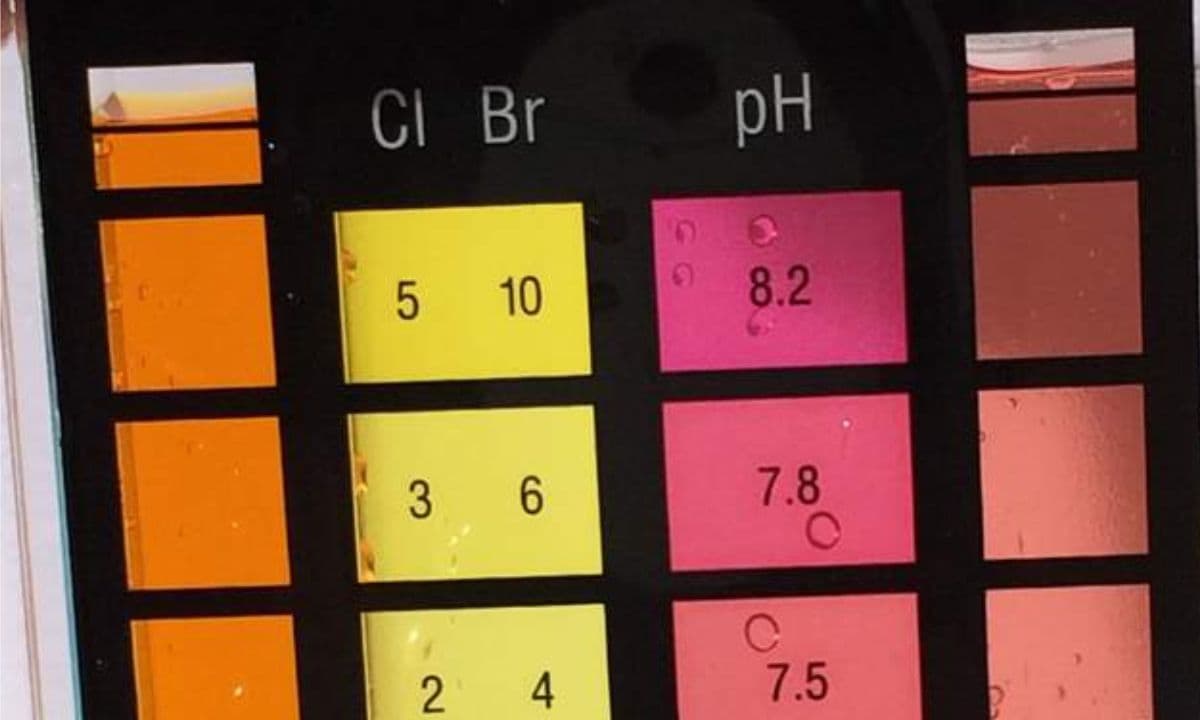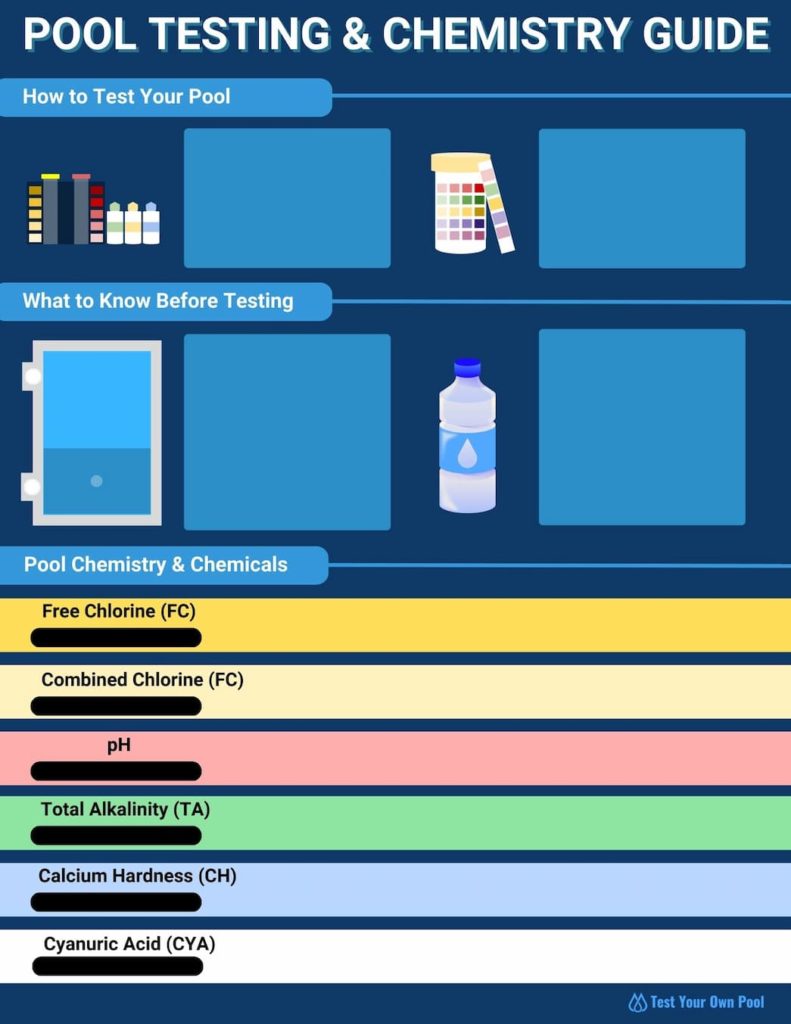Why is My Pool Chlorine Test Orange? Diagnosing Potential Reasons

When testing chlorine levels, pool test kits usually have one of these three types of chlorine testing. When using the OTO testing method, the presence of chlorine will turn a sample a shade yellow.
Sometimes that sample can turn into a bright orange shade which might cause some confusion or panic. But you don’t need to worry too much!
What Does it Mean if a Chlorine Test is Orange?
The most common and likely reason why a chlorine test is orange is that there is simply a lot of chlorine in the water. This isn’t necessarily a bad thing or any cause for concern. Use our chlorine calculator to get a better idea of how much chlorine you should be adding.
However, since OTO tests can’t distinguish between free chlorine (FC) and combined chlorine (CC) and only shows total chlorine, it’s not possible to tell if that is all chlorine ready to be used or if there are chloramines and bad contaminants in the water.
An OTO test is a pretty outdated way of measuring chlorine, and using a FAS-DPD test kit is highly recommended for more accurate results.
The most accurate and reliable pool testing kit.
Type of Chlorine Test: FAS-DPD
Read our full Taylor K-2006 Review.
While excessive chlorine is typically responsible for the orange shade, there are some other reasons why it could be happening:
- Old or expired testing reagents may not accurately read the chlorine in the water. Reagents that are past expiration or have been improperly stored can skew test results.
- Not properly following the testing procedure can result in wrong readings as well. It’s vital to ensure each test is done as the directions lay it out.
- If the testing tube hasn’t been properly washed before testing chlorine, that can also mess with the testing. Interference from other chemicals and reagents can cause a change in the color.
Fixing the Orange Chlorine Result
If you are sure the OTO test was done accurately and the reason for the orange shade is high chlorine levels, the best recommendation is to stop adding chlorine and let the levels naturally drift down. Chlorine will decrease over time by UV rays and fighting contaminants.
It might also be a good idea to test cyanuric acid (CYA) levels. This way, as the chlorine levels drop, you know where free chlorine should be relative to CYA.

Need a Refresher on Chemistry Readings?
Free chlorine, CYA, and combined chlorine, oh my! Download our handy guide for a quick and easy review of what chemistry parameters to test and which chemicals to use.
Too Much Chlorine Isn’t a Bad Thing!
Let’s be clear; an orange chlorine test isn’t anything to be concerned about. Just let the levels drift down on their own.
It would be highly recommended to upgrade testing to the FAS-DPD method. This will not only accurately test chlorine levels higher than 5 ppm (the highest an OTO test can show) but also separate free chlorine and combined chlorine so no extra math is involved!

